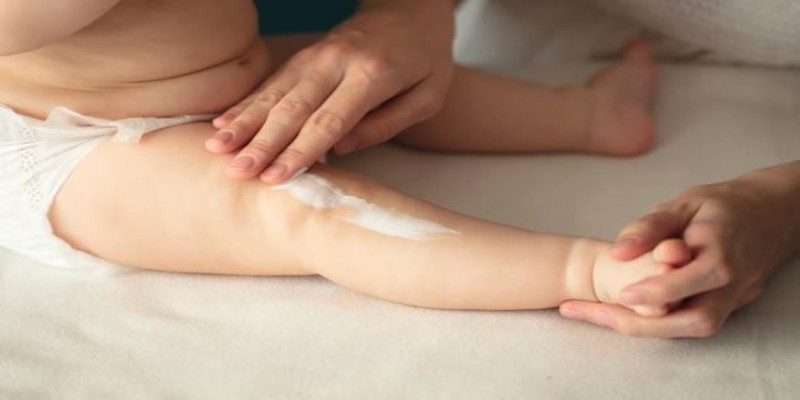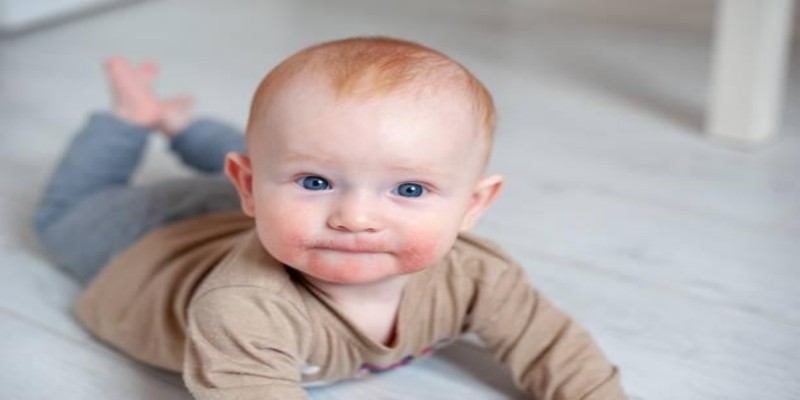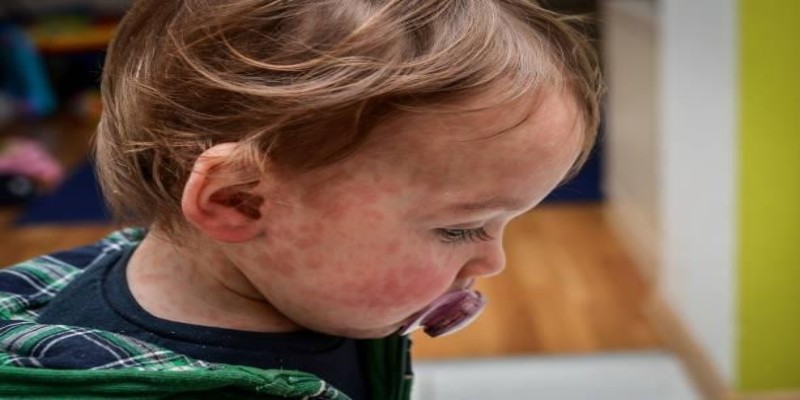Common Baby Skin Problems and How to Treat Them
A baby’s delicate skin can easily develop red bumps, dryness, or rashes despite your best efforts. The good news? Most baby skin issues are common and treatable. This guide covers the most frequent skin problems in babies, effective treatments for newborn rashes, and tips on choosing the right skincare products to keep your little one protected and comfortable.

Diaper Rash
Almost every baby will face diaper rash at least once according to medical records. Diaper rash reveals itself as red irritated dermatological conditions on your baby's lower buttocks because of extended skin wetness or friction from a diaper's occlusive nature.
How to Treat It:
• The skin needs brief periods without diapers to keep it dry.
• Your baby will benefit from applying diaper rash cream containing zinc oxide, which forms an effective protective layer.
• Your baby needs occasional periods without diapers to give the skin time to ventilate.
A recommendation is to choose wipes with no fragrance because they will cause additional skin sensitivity.
Baby Acne
Yes, babies can get acne, too! Baby acne presents as small bumps that appear as either red or white lesions on the skin surface of the forehead, nose, and cheeks. The skin condition disappears in a few weeks.
How to Treat It:
• Daytime washing of your baby's face should be done with water alone.
• Harsh soaps and lotions should be completely avoided for skin care.
• Do not poke or brush the alligator bumps because their healing course should follow naturally.
Cradle Cap
The flaky, yellowish scalp condition appears concerning yet remains harmless to the body. Baby cradle cap usually occurs during infancy and disappears automatically after about three months.
How to Treat It:
• Massage a small amount of baby or coconut oil into the scalp to loosen flakes.
• Use a soft brush to gently remove the flakes after washing the hair with baby shampoo.
• Stick with mild shampoos designed for sensitive baby skin.
Eczema
Eczema causes dry, itchy patches of skin, often on the face, arms, and legs. It's common in babies with sensitive skin and can be triggered by allergens, harsh soaps, or weather changes.
How to Treat It:
• Keep your baby's skin well-moisturized with fragrance-free lotions.
• Use lukewarm water for baths and avoid long soaking times.
• Dress your baby in soft, breathable fabrics like cotton.
• If the eczema persists or worsens, consult your pediatrician for specialized treatment options.

Heat Rash
Heat rash appears as tiny red bumps on areas of the skin that sweat, such as the neck, chest, and diaper area. It's common in hot and humid weather.
How to Treat It:
• Keep your baby cool and dress them in loose-fitting, breathable clothes.
• Avoid overdressing or wrapping them in heavy blankets.
• Give your baby a lukewarm bath and pat the skin dry gently.
Milia
Milia are tiny white bumps on a baby's nose, cheeks, or chin. They form when dead skin cells get trapped beneath the skin's surface. Don't worry—they're totally harmless and will go away on their own.
How to Treat It:
• No treatment is necessary—wash your baby's face with warm water.
• Avoid applying lotions or creams directly on Milia.
Hives
Your baby can develop red rash-like welts known as hives at any point on their body, which also cause excessive itching. An allergic reaction or irritant like new detergent or specific foods typically leads to a hive's appearance.
How to Treat It:
• If you can find the trigger of the hives, then you should eliminate them from the scene.
• Cool compress application works to ease the itchiness.
• Contact your pediatrician if hives continue without healing or if they are combined with breathing problems such as difficulty breathing.
The Selection of Best Baby Skincare Products
When it comes to how to care for sensitive baby skin, the products you use can make all the difference. Here’s what to look for:
• Use only products that do not contain fragrances or are hypoallergenic since they reduce irritated skin reactions.
• The use of baby skin products containing shea butter along with aloe vera and oatmeal presents gentle natural soothing properties.
• The skin loses its moisture through the use of parabens and sulfates, which produce these harmful effects.
• Reputable brands provide baby skincare products which protect and moisturize newborn skin. Base your child's skin test with any new product on a small area before full application.
• Multiple baths should be avoided since frequent bathing leads to skin dryness in babies. Take your baby to the tub only twice to three times a week unless they need more cleaning.
• Apply a gentle baby lotion to your baby when their skin remains slightly moist as this helps you keep the moisture inside their skin.
• Observe skin reactions since new food items and cleaning products as well as detergents could potentially trigger allergic responses. Regular checks of skin should include attention to abnormal rashes together with redness.

Proper Care Through Gentle Products
Although baby skin tends to be unpredictable, the proper care with attention leads to successful management of most issues.
Acquire gentle products as you maintain simplicity in your routine since you possess everything needed to maintain your sense of comfort with your little one.





